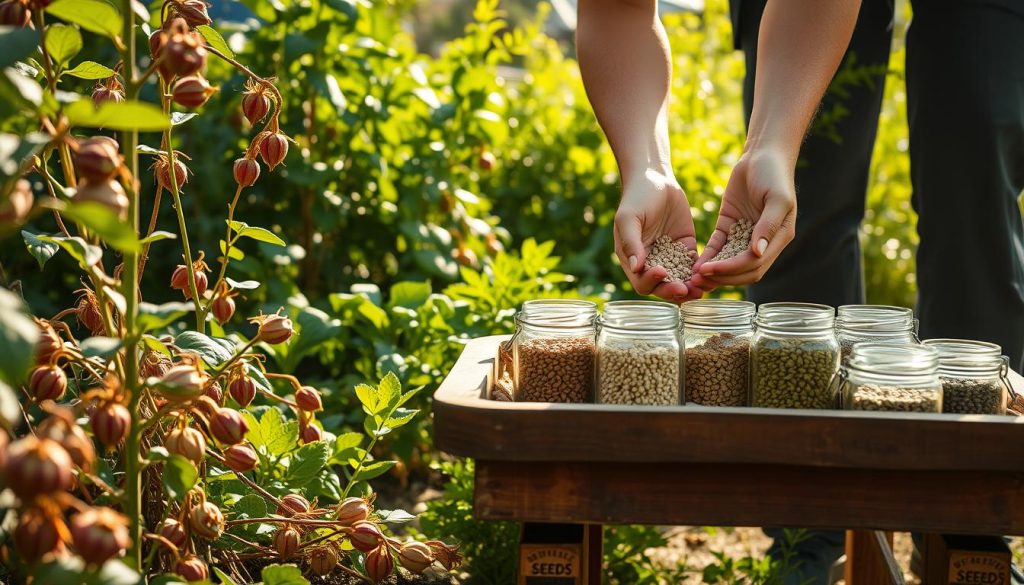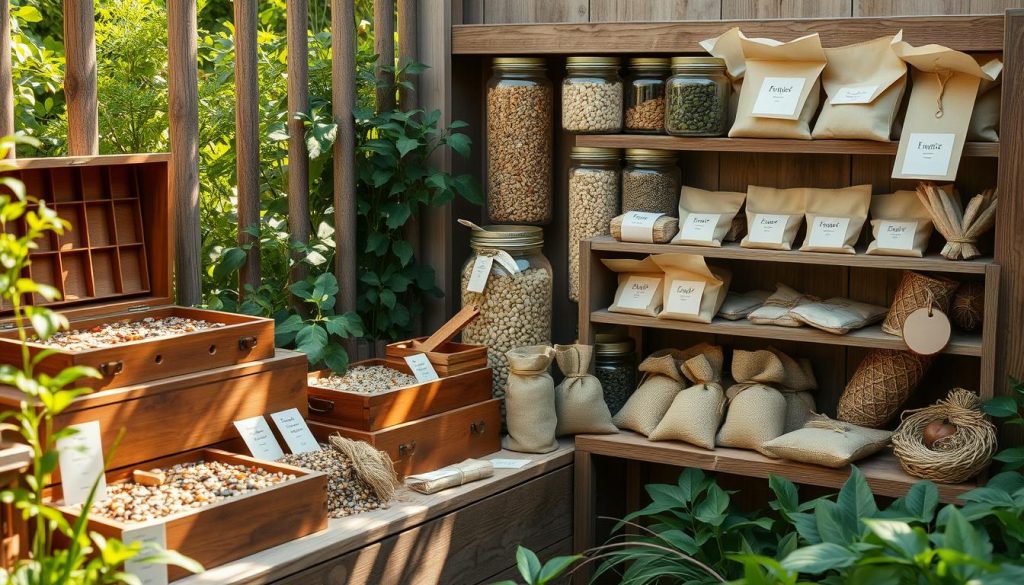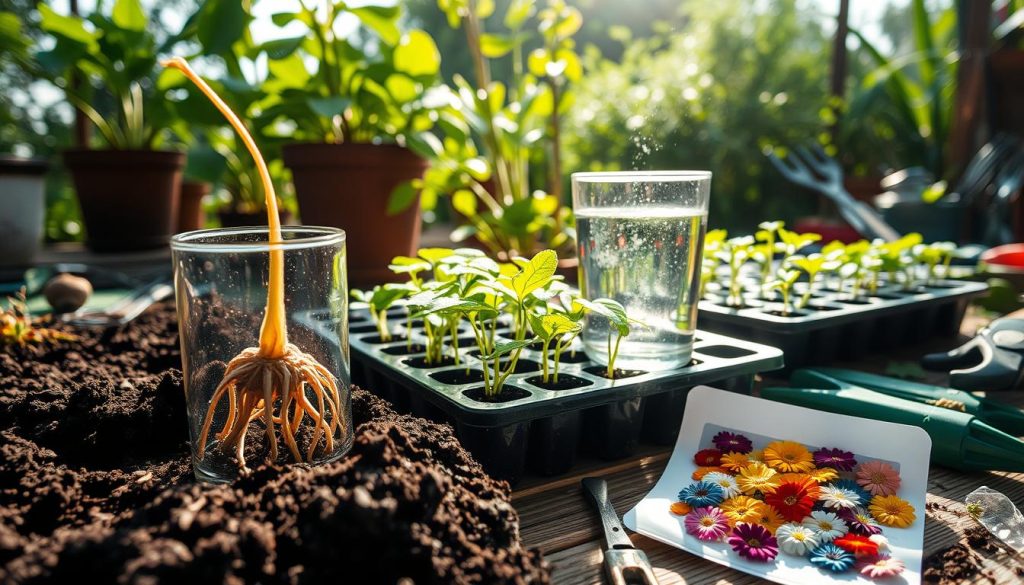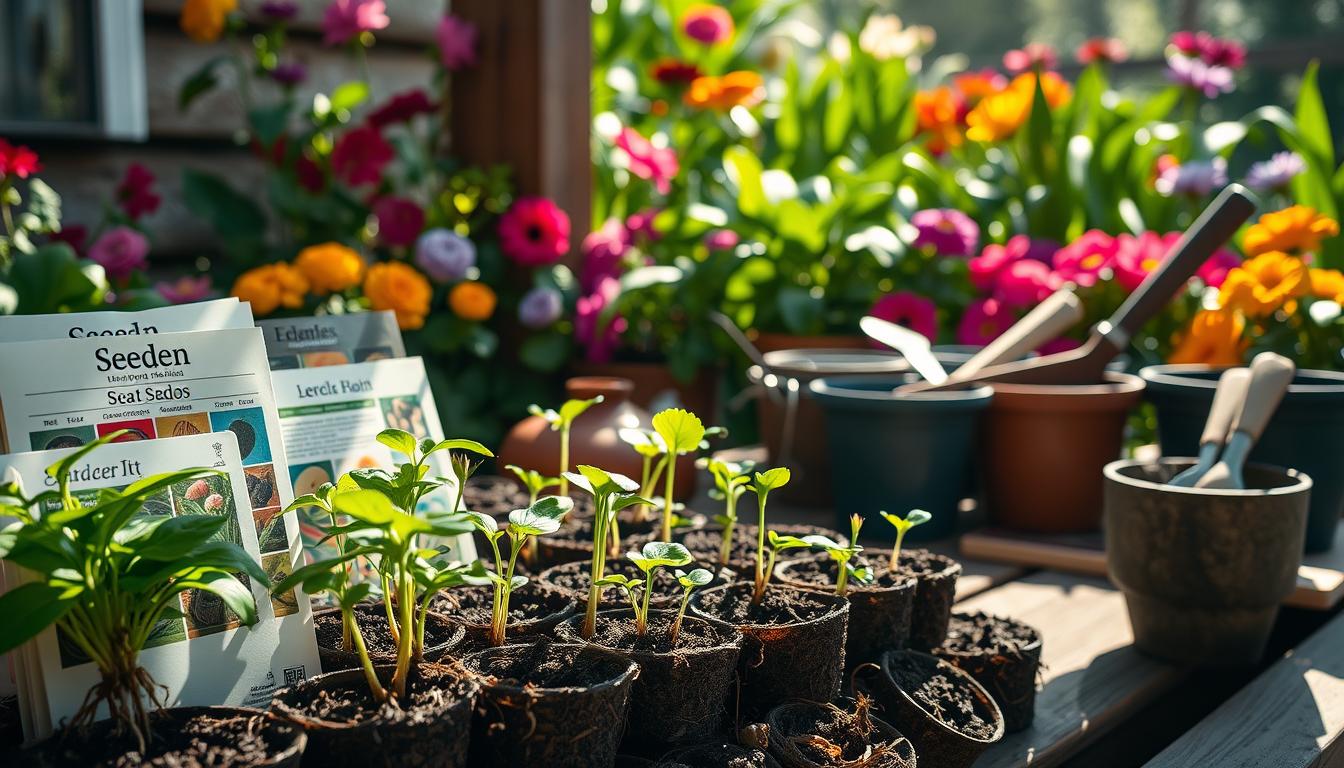I’m excited to share my tips on seed saving and propagation. I focus on heirloom seeds and organic gardening. These methods help us grow food in a sustainable way.
Seed saving and propagation are key for gardeners. They let us keep our favorite plants and save money. These skills also keep our gardens healthy and diverse.
I’ll talk about the benefits of heirloom seeds in organic gardening. I’ll give you insights and advice, no matter your gardening level. My aim is to help you succeed in seed saving and propagation.
In this article, I’ll share my personal experience and tips. We’ll cover the basics of seed saving and successful techniques. We’ll also look at propagation methods, all focused on heirloom seeds and organic gardening.
Why Seed Saving is Essential for Gardeners
As a gardener, I’ve learned how vital seed saving is. It helps us grow our favorite plants and cuts down on buying seeds. This saves money and lets us try new ways to grow plants.
Some key benefits of saving seeds include:
- Keeping rare heirloom varieties alive
- Helping plants and animals by growing many types
- Using seeds that would otherwise go to waste
Seed saving helps our food system and keeps our local environment healthy. It’s key for sustainable farming. It also helps protect against crop failures and climate change.
I’m eager to learn more about seed saving. There are many ways to save and grow seeds. Finding the right method for your garden is important. It supports sustainable farming and helps our food system be stronger and more diverse.
The Basics of Seed Saving
As a gardener, I’ve learned that seed saving is key. It lets me keep my favorite plants and share them. To start, knowing your seeds is important. Open-pollinated seeds are best for saving because they grow like the parent plant.
Seed saving is a gardening tip many miss. But it’s easy and saves money. By saving seeds, you can grow the same tasty plants next year.

Understanding Different Types of Seeds
There are many seed types, like open-pollinated, hybrid, and heirloom. Open-pollinated seeds grow naturally. Hybrid seeds come from cross-pollination. Heirloom seeds are saved for generations.
When to Save Seeds
When to save seeds varies by plant and climate. Seeds are ready when the plant stops producing. For example, tomato seeds are saved in fall, and herb seeds in summer.
Tools I Use for Collecting Seeds
- Small envelopes or bags for storing seeds
- A label maker for labeling seed packets
- A pair of scissors for cutting seed heads
With these steps and tools, you can start saving seeds. It’s great for both new and seasoned gardeners. Seed saving lets you enjoy fresh produce all year.
Techniques for Successful Seed Saving
As a gardener, I’ve learned that saving seeds well needs focus and the right methods. Drying and storing seeds right is key. I use airtight containers and keep them in a cool, dry spot. This keeps the seeds good for later use.
To stop cross-pollination, I’ve found a few good ways. I use barriers to keep different plants apart. I also harvest seeds from plants that are far from others of the same kind. This keeps the seeds pure and true to their type, which is crucial for heirloom seeds.
Drying and Storing Seeds
- Use airtight containers to store seeds
- Store seeds in a cool, dry place
- Keep seeds away from direct sunlight
Tips for Preventing Cross-Pollination
To stop cross-pollination, I mix physical barriers with isolation methods. This keeps the seeds pure and true to their kind. By doing this, gardeners can keep their plants’ genetics intact. This ensures their seeds stay good for planting later.

Labeling and Organizing Your Seeds
Lastly, I label and organize my seeds well. I use a system that makes it easy to find and track different varieties. This keeps my seeds tidy and makes it simple to find what I need. By using these methods, I’ve saved and stored seeds from my garden, including heirloom ones. And I get a big harvest every year.
Understanding Propagation Methods
As a gardener, I’ve learned how vital plant propagation methods are for sustainable farming. These methods help us use fewer external seeds and support local seed banks. I’ll explore the various types of propagation, like seed and vegetative methods.
There are two main ways to propagate plants: seed and vegetative methods. Seed propagation grows new plants from seeds. Vegetative propagation uses parts of existing plants, like cuttings or divisions.
Seed Propagation vs. Vegetative Propagation
Seed and vegetative propagation each have their own benefits and drawbacks. Seed propagation increases genetic diversity. Vegetative propagation ensures new plants are the same as the parent plant. The choice depends on the plant type, growth habits, and desired outcome.
Choosing the Right Method for Your Plants
To pick the best propagation method, consider a few things:
- Type of plant: Some plants do better with seed, others with vegetative methods.
- Growth habits: Vigorous plants often do well with vegetative methods.
- Desired outcome: For identical plants, vegetative is the way to go.
Knowing about plant propagation methods and choosing wisely helps in sustainable farming. It also supports local seed banks. 
My Favorite Plants for Seed Saving and Propagation
As a gardener, I’ve enjoyed trying out different plants for saving seeds and growing new ones. It’s rewarding to see your favorite plants grow and produce seeds for the next harvest. Here, I’ll share my favorite plants for saving seeds and growing new ones, along with tips for starting.
Choosing the right plants for seed saving is key. Heirloom tomatoes, herbs like basil and mint, and perennials like coneflowers and black-eyed susans are great. They’re easy to grow and produce lots of seeds, perfect for a seed bank.
- Choose open-pollinated seeds made for saving
- Learn how to harvest and store seeds properly
- Support local seed banks to save plant varieties and boost biodiversity
By following these tips and trying out different plants, you can become great at saving seeds and growing new ones. Enjoy the many benefits of gardening and saving seeds.
Troubleshooting Common Seed Saving Issues
As a seasoned gardener, I’ve faced many challenges in seed saving. Issues like mold, pests, and poor germination rates can be tough. But, with the right techniques, you can keep your seeds viable for successful farming.
Combating Mold and Pests
Mold and pests are common problems for gardeners. To avoid them, dry your seeds well before storing. Use airtight containers or envelopes to protect them from the environment. A sprinkle of diatomaceous earth can also keep pests away.
Understanding Poor Germination Rates
Low germination rates can be frustrating. Check if your seeds are stored properly and if they’re old. These factors can affect how well seeds grow.
Preserving Seed Viability
To keep seeds fresh, watch the temperature and humidity in your storage area. A cool, dry place is best for seed longevity. Regularly check your seeds and replace them as needed to keep your seed bank thriving.

